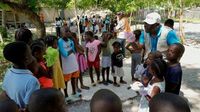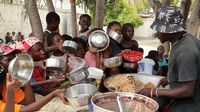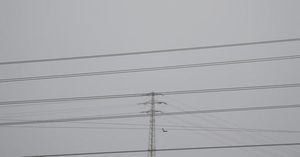In a country already battered by years of instability, Haiti’s children are now bearing the brunt of a humanitarian crisis that has reached alarming new heights. As of October 8, 2025, UNICEF has reported that an estimated 680,000 children have been displaced by escalating gang violence—nearly double the number from just a year ago. The surge in violence and displacement has left families scrambling for safety, with basic services crumbling and the threat of hunger, exploitation, and lost childhoods growing ever more dire.
The numbers are startling. According to UNICEF, over 6 million people in Haiti—including more than 3.3 million children—now require urgent humanitarian assistance. That’s half the country’s population. The violence has forced more than 1.3 million people from their homes, and 246,000 have been displaced just this year alone. Armed groups, whose grip on the country has only tightened, now control areas home to 2.7 million people, including 1.6 million women and children. In the capital, Port-au-Prince, gangs reportedly control up to 90% of the city, making it nearly impossible for aid workers to reach those in need or for families to access clinics, food distribution points, and schools, as reported by the Associated Press.
For many families, the trauma is relentless and inescapable. “One of our messages is that Haiti is at a breaking point, we need to make clear this generation cannot keep waiting for help to come,” Roberto Benes, UNICEF’s regional director for Latin America and the Caribbean, told AFP from Haiti. The crisis has left countless children living in fear, exposed daily to violence and exploitation. The UN verified over 2,269 grave violations against 1,373 children in 2024 alone. Among these, 213 children were killed, 138 injured, 566 suffered sexual violence—including 406 rapes and 160 gang rapes—and 302 were recruited by gangs.
The impact on education has been devastating. At least one in four children in Haiti is out of school, with violence forcing the closure of more than 1,080 schools this year, according to UNICEF’s latest report. During the previous school year, over 1,600 institutions were closed and 25 were occupied by armed groups, affecting more than 243,400 students and 7,548 teachers. Even now, 84 schools are being used as makeshift shelters, disrupting the education of nearly 500,000 school-age children. The result? A generation at risk of being permanently stripped of their right to learn and to dream of a better future.
“Children in Haiti are experiencing violence and displacement at a terrifying scale,” UNICEF Executive Director Catherine Russell said in a statement. “Each time they are forced to flee, they lose not only their homes but also their chance to go to school, and simply to be children.” The words echo the daily reality of families like that of Geraldine Matha-Pierre, a mother of two boys, ages 13 and 15, who has been living in a shelter for two years since gangs raided their community. “I’m hungry. My kids are hungry,” she told the Associated Press. She used to sell plantains, bananas, and other crops at a local market, but gang violence robbed her of her livelihood—and her sons of their education. The family now relies on the kindness of friends and a distant relative’s promise to help pay for the boys’ return to school.
The risk of recruitment by armed groups looms large. The UN has verified more than 300 cases of children recruited and used by gangs last year, nearly double the previous year. Children as young as 10 are being forced to carry weapons, serve as lookouts, or act as human shields. Girls, in particular, face brutal risks of sexual violence, coercion, and exploitation. “He’s not going to school, he’s not doing anything,” said Jeanette Salomon of her 20-year-old son, who lost his younger brother to a stray bullet two years ago. “I’m very protective of him, because that’s all I have left.”
For many, the struggle is compounded by the lack of safe shelter. The number of displacement shelters has doubled to 246 in the first six months of 2025, but more than 30% of these lack basic protection infrastructure. Many are located in dangerous areas, further exposing families to the risk of violence. Caroline Germain, who lost her leg in the 2010 earthquake, now worries constantly about her 17-year-old son. “I hope he understands not to get involved in anything stupid,” she said. “There is no one to protect him.”
The crisis is not just about violence. Hunger and malnutrition are stalking Haiti’s children. Over 1 million children face severe food insecurity, and around 288,500 children under five are projected to suffer from acute malnutrition next year, according to UNICEF. The collapse of basic services has forced aid groups to scale back, even as the need grows more urgent. “In many areas, aid workers cannot safely reach communities, and families cannot travel to clinics, food distribution points or schools,” the UNICEF report noted.
Despite the scale of the crisis, international help has been slow to materialize. The UN Security Council approved a U.S.-backed plan to boost an international security mission more than 15 months ago, but the force remains underfunded and under-equipped. Meanwhile, UNICEF’s humanitarian appeal for Haiti is only 13% funded, leaving critical programs for protection, feeding, and medical assistance at risk. The agency is urgently calling for global funding to expand life-saving aid, from shelter and healthcare to clean water and education. “Without decisive action, the future of an entire generation is at stake,” the UNICEF report stated.
UNICEF estimates that 2.7 million people, including 1.6 million women and children, now live in gang-controlled areas—nearly a quarter of Haiti’s population. The agency warns that unless protection services are urgently restored, “an entire generation risks growing up not only in fear but also under relentless exposure to violence and exploitation.”
For Haiti’s children and their families, the wait for relief is growing ever more desperate. The world is watching, but for those living the crisis, hope is fading fast. The call for urgent, decisive action has never been clearer—or more necessary.






